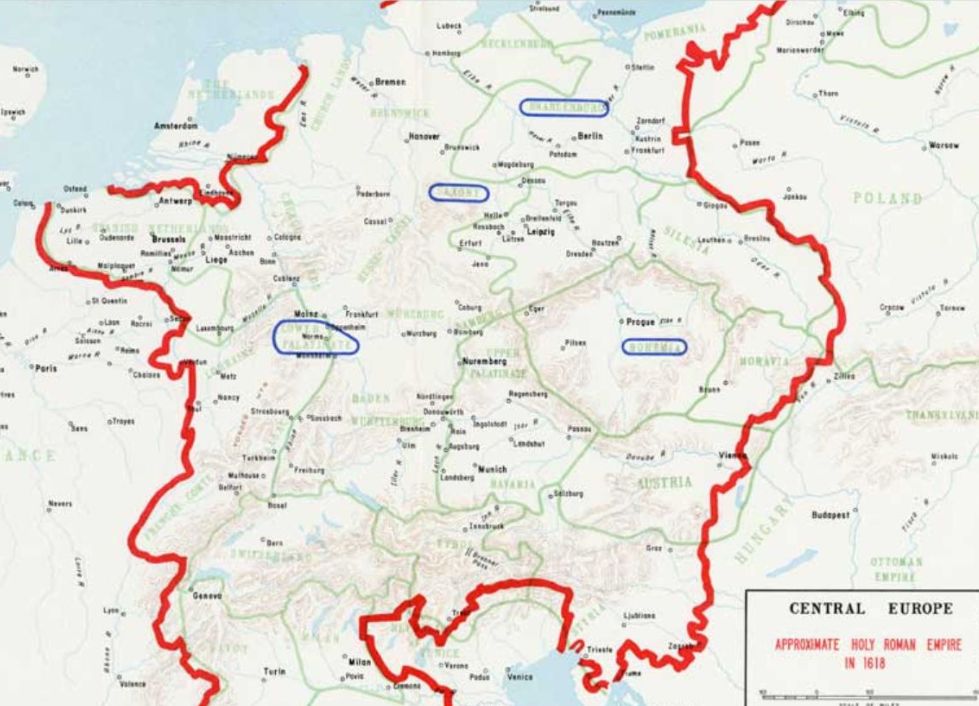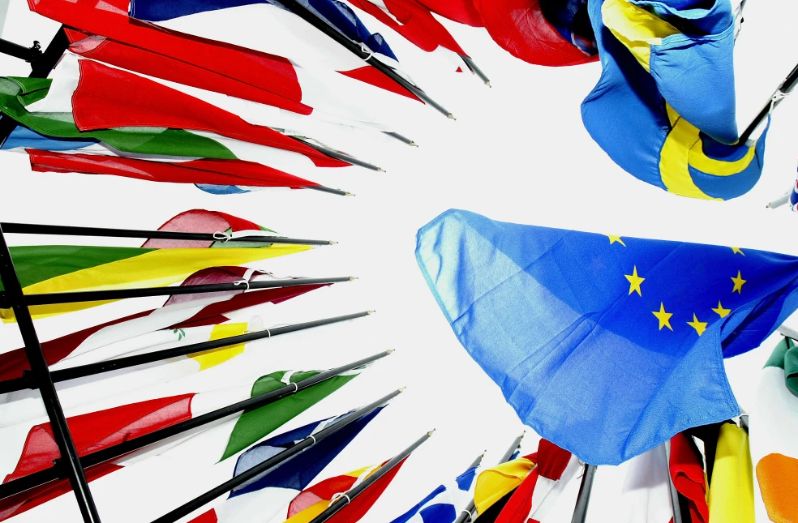By Eric Vandenbroeck
and co-workers
Europe And Russia’s Aggression In Ukraine
In The Spirit
of the Laws, published in 1748, the French philosopher Montesquieu argued that
one of the main elements binding the Dutch provinces together was their
resistance to the Spanish crown. Likewise, what unified Swiss cantons was
resistance to the Holy Roman Empire:

A Similar Process Is Underway In Europe Due To Russia’s
Aggression In Ukraine.
In the latest
Eurobarometer poll released in January, 72 percent of citizens living in the
European Union said that their country’s membership in the EU is beneficial.
That is the highest score in a long time—the Eurobarometer has asked the same
question since 2005. In 2010, just 50 percent of Europeans thought their
country benefited from EU membership. Since then, slowly but steadily, the
percentage has been creeping up until it reached 72 percent in 2020. Inversely,
today 22 percent say their country does not benefit from membership. In 2010,
that was almost twice as much, at 39 percent.
Something interesting
is happening here. Geopolitical turbulence—caused mainly by Russia’s war
against Ukraine and its direct and indirect fallout—puts the EU under severe
strain. It has forced the 27 member states to argue about sanctions, weapons
deliveries, and other complex issues. At the same time, this situation has also
seemed to unleash forces in the opposite direction. A European Council on
Foreign Relations poll this week also showed that in Europe, the war is increasingly seen not
as an attack on a neighboring country but as an assault on an entire continent.
National politicians
still regularly complain about losing national
sovereignty, and
political commentators frequently predict the implosion of a hopelessly divided EU. Yet more
and more European citizens think the EU is good for them. And they do not
define the European interest just in economic terms anymore. Here, too, a
fundamental shift is underway. Europeans used to tell pollsters that the benefit of their country’s EU
membership was mainly economic. Another positive aspect, they said, was that it
fostered cooperation between their country and others in Europe. With the war
in Ukraine raging, a different benefit suddenly appears: the fact that the EU
“contributes to maintaining peace and strengthening security.” Thirty-six
percent of Europeans now think this is one of the main benefits of EU
membership, six percentage points more than the year before. In a country like
the Netherlands, which, like the United Kingdom, has always emphasized the
economic benefits of membership and downplayed the others, it is even 13 points
higher than the year before. In Sweden and Germany, a similar shift is visible.
It is telling that even northern countries that have preferred to consider
Europe as a market has started looking at the EU as a security provider.

In 2013, during his
state-of-Europe speech in Berlin, former European Council President Herman Van
Rompuy observed that, over the years, Europe had turned into a space “allowing goods, services, and capital
to circulate freely, allowing persons to travel freely.” Drawing on the works
of the French philosopher Michel de Certeau, he noted
that much less attention had been paid to Europe as a place. “For Europe to
become a place, to feel more like a home, our union must be able, if not to
protect people, at the very least to respect the places of protection and
belonging.”
Ten years later, this
transformation of the EU from a space to a place seems well underway: From
space to roaming around and exploring diversity and freedom, it is turning
into a place where citizens want to feel safe and at home. For several years,
Kai Gehring, a professor of political economy at the University of Bern, has
studied European identity. In a report published last year, he described how a
stronger European identity was emerging, one “associated with higher trust in
EU institutions and support for common policies.”
But this raises the
question of what holds together a common identity comprising various
heterogeneous groups. It is often assumed that citizens mainly identify with
smaller, close-knit groups; the larger the group, even if formed voluntarily,
the weaker the shared identity. Yet the most important units of the political
and economic organization today are much larger. The EU is just one
example. But in Europe’s case, for Gehring, the answer was becoming
clear: a common external threat.
In 2013, during his
state-of-Europe speech in Berlin, former European Council President Herman Van
Rompuy observed that, over the years, Europe had turned into a space “allowing goods, services, and
capital to circulate freely, allowing persons to travel freely.” Drawing on the
works of the French philosopher Michel de Certeau, he
noted that much less attention had been paid to Europe as a place. “For Europe
to become a place, to feel more like a home, our union must be able, if not to
protect people, at the very least to respect the places of protection and belonging.”
Ten years later, this
transformation of the EU from a space to a place seems well underway: From room
to roaming around and exploring diversity and freedom, it is turning into
a place where citizens want to feel safe and at home. For several years, Kai
Gehring, a professor of political economy at the University of Bern, has
studied European identity. In a report published last year, he described how a
stronger European identity was emerging, one “associated with higher trust in
EU institutions and support for common policies.”
But this raises the
question of what holds together a common identity comprising various heterogeneous
groups. It is often assumed that citizens mainly identify with smaller,
close-knit groups; the larger the group, even if formed voluntarily, the weaker
the shared identity. Yet the most critical units of the political and economic
organization today are much more significant. The EU is just one example.
But in Europe’s case, for Gehring, the answer was becoming clear: a
common external threat.
His research builds on the balance-of-power theory, which
holds that when faced with a powerful adversary, less powerful states will
attempt to balance against it by cooperating or integrating. This theory is
often used to help explain both the origins of European integration in the
1950s (supported by the communist threat) and the growth of Euroskepticism
among national administrations and the public in the post-Cold War years (as a
result of the disappearance of that threat).
Gehring tested this
mechanism for the EU after Russia annexed Crimea in 2014 and found that the
identification with the larger group had already significantly increased. He
noted that this European identity, as he
called it, had
nothing to do with citizens’ rational calculations or that they now knew more
about Europe. On the contrary, the identification with Europe was emotional—“an
unconscious, psychological response rather than a rational one.” It is stable
and does not disappear immediately. This would help explain why trust in European institutions is rising and
why citizens attach more importance to European values than before and become
more positive about standard policies such as issuing joint EU debt or a
European minimum wage.
Russian President Vladimir
Putin, former U.S. President Donald Trump, and Brexit supporters thought they
could undermine or even destroy the EU by bullying it. The opposite has
happened. Far-right populist leaders such as France’s Marine Le Pen or Italy’s Matteo Salvini no
longer call for exits from the EU.
Vera Jourova, the
European Commission vice president for values and transparency, recently
admitted she had been “scared” of Trump’s former chief strategist, Steve
Bannon, and his negative influence on the European parliamentary election in
2019. Now, those fears are gone. Jourova thinks that in 2024 when European voters go
to the polls again, they will vote for established, more moderate parties
because “the people now see, especially in the time of crisis, it’s not the
time for [populist] experiments.”
For updates click hompage here